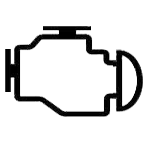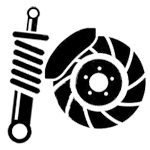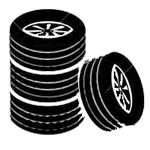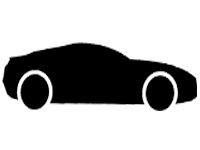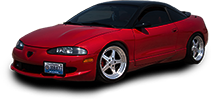How do I tune using ECMLINK?
DSMLink Tuning Guide
For those of you that have a DSM and have DSMLink, Nick (NickNorth11) and Shane2GSX wrote this basic tuning guide for the DSMLink community.
It's been reviewed by the experts and creators of DSMLink for accuracy. Figured I'd throw it up on here since we have some DSM's and I think a few of you have asked me about DSMLink.
Basic DSMLink Tuning Guide
(This guide is exactly what the title implies, a basic guide to tuning. It is not intended to teach you, or tell you, everything needed to tune a DSM. Research will be required to fully understand the terms, values, and procedures below. With that said, the people involved with any and all aspects of this guide are NOT responsible for ANY damage done to your car.)
Before You Start:
- Verify that Base Timing is correct
- Verify that Base Fuel Pressure is correct (1g manual = 37 psi; 1g auto = 43.5;2g = 43.5 psi )
- Verify that there are no boost leaks
- Ensure all other components are working correctly
- Swap plug wires to account for different CAS (97-99)
Approximation of desired values:
(Some of these must be obtained manually and some via DSMLink. Others are simply values to monitor and keep within given parameters.)
- A/F Ratio
- (closed loop) 14.7
- (open loop) 11
- AirFlow (compare to specific turbo output)
- AirFlowPerRev (at idle) M/T = .27 ±10% (.24 - .30)
A/T (neutral) = same as M/T
(drive) = .31 ±10% (.28 - .34) - CoolantTmp > 179°, sufficient operating temp. to tune
- if: x < 206°, full timing
- 206° < X
- <224°, -1°>x>224°, -2°
- IdleSw (car off / ecu on) 1
- IntTemp (34°< x <84)
- ISCPosition 30 (at idle)
- LearnedIdleAdj 140 (at idle)
- LTFT Lo x→0, (0 ± 5)
- LTFT Mid x→o, (0 ± 5)
- Front02 cycles around .5 (.05-.95)
- RawThrotPos 32
- ThrotPos if: idle, 0
- WOT, 100
- TPSvolts .63 (when RawThrotPos = 32)
Setting Initial Parameters:
- Setup wideband operation within dsmlink.
- If needed, change BoostEst to your respective engine size. (2.0L, 2.3L)
- Set the A/F Ratio prefs for your injectors.
- If base timing is off, adjust timing sliders across the board to compensate. (if 3, add 2)
- If needed, cancel out any CEL’s due to already known causes. (such as rear O2)
- For safety and if desired, set Knock CEL to 3 degrees knock.
- Set global and dead time parameters according to specifications for injectors.
- Set desired values to be logged.
Closed Loop Tuning (Cruise/Idle):
- Setup DSMLink to Log the following (if available):
- TPS
- STFT
- LTFT Lo
- LTFT Mid (2G) or LTFT Hi (1G)
- MAFRaw
- Wideband
- Boost sensor (GM 3 bar, AEM, etc.)
- Turn on vehicle and let warm properly.
- Drive normally, cruising for at least 10 minutes - Do not go WOT
- Let car idle for 5 minute before shutting it off - Stop logging
- Choose your method of closed loop tuning by determining first if AirflowPerRev is at an acceptable value at idle. If AirflowPerRev is not acceptable, begin tuning using Method 1 until it is at an acceptable value. If AirflowPerRev is acceptable, proceed to Method 2.
Method 1 – Airflow Metering:
- Turn on vehicle and let warm properly.
- Begin logging. Drive normally, cruising for at least 10 minutes - Do not go WOT
- Let car idle for 5 minute before shutting it off - Stop logging
- Compare LTFT for idle (Lo) and cruise (Mid) operations – Strive to get as close to 0% as possible.
- If either is greater than +/- 5 from 0%, proceed to step 6. If not, and your happy with your %, you may stop.
- If LTFT Lo is negative, decrease the 50 Hz slider in the amount of that value. (i.e. If LTFT Lo is -10%, decrease the 50 Hz slider from 0% to -10%).
- If LTFT Mid is positive, increase the 150 Hz slider in the amount of that value. (i.e. If LTFT Mid is 10%, increase the 150 Hz slider from 0% to 10%).
Or: (From method 1) If LTFT Lo is greater than LTFT Mid, increase dead time. If LTFT Lo is less then LTFT Mid, decrease dead time. - If adjustments are made, return to step 1.
Method 2 – Fuel Delivery:
- Turn on vehicle and let warm properly.
- Begin logging. Drive normally, cruising for at least 10 minutes - Do not go WOT
- Let car idle for 5 minute before shutting it off - Stop logging
- Compare LTFT for idle (Lo) and cruise (Mid) operations – Strive to get as close to 0% as possible.
- If either is greater than +/- 5 from 0%, proceed to step 6. If not, and your happy with your %, you may stop.
- If LTFT Lo is greater than LTFT Mid, increase dead time. If LTFT Lo is less then LTFT Mid, decrease dead time.
- If LTFT Lo and LTFT Mid are equal but non-zero, adjust global setting.
- If adjustments are made, return to step 1.
Open Loop Tuning (WOT) Fuel & Timing:
- Choose a desired fuel/octane level.
- Choose a desired boost level that you want to run. Dial your boost in at a lower boost setting to begin with, depending on turbo size, probably no more than 1 bar.
(An alternate to the previous method is to start at your target boost level with conservative settings, i.e. low timing and rich mixture. Make a few pulls before tuning to ensure safe operation before continuing with this method). - Choose a proper A/F Ratio to shoot for in the entire RPM range – Some common A/F ratios are 10:1, 10.5:1, 11:1, 11.3:1, 11.5:1. The proper A/F ratio will depend on your specific vehicle and its setup. While there are too many variables to list when determining a proper A/FR, some of the common ones are fuel octane, intercooler efficiency, and turbo size. In most cases, on a properly running DSM, on pump gas with an efficient intercooler, an 11:1 A/FR is a common and safe ratio to make good power with.
- Ensure that all values you want to log are set. (The following are recommended).
- Wideband
- Boost sensor
- EGT
- After warming the car properly (warm car, drive at cruise for 10 min., idle for 5 min.), data log a 3rd gear pull from 2000 RPM to redline. Keep a very close eye on Knock, A/FR, and EGT’s for anything that might spell trouble.
- If you see ANY Knock, increase fuel sliders. If A/FR is already richer than your target, reduce timing by a degree instead of increasing fuel.
- If no Knock is present and your A/FR is leaner than your target, increase fuel to desired level. If A/FR is richer than your target, and you’re at your target boost PSI, decrease fuel.​
- 6. Allow car to cool down between runs. (Number of runs between cool down periods will be dependant on intercooler efficiency and boost level, among other things. Not doing this will result in inconsistent results).
- Continue logging runs in this manner until you reach your target A/FR with no Knock.
- Once you reach your target A/FR with no knock, raise boost by 5 PSI or less. Repeat steps 5 through 7 until you reach your target boost PSI.
- Once you’ve reached your target boost PSI and desired A/FR with no knock, increase timing by one degree and log another 3rd gear pull from 2000 RPM to redline. Again, keep a close eye on Knock, A/FR, and EGT’s.
- Repeat step 8 until you see one degree of knock retard. At that point, reduce timing by one degree. (Aim for high teens to low 20s for timing advance. Higher is better.)
- Finally, do a full run from 1st through 4th gear, watching Knock, A/FR, EGT’s, and boost. Watch knock especially closely. Ensure you run the car very hard. If you see any Knock, you may need to reduce timing. If you see that your A/FR’s are off, you may need to adjust your fuel.
QA #452
Last Updated:
2020-01-25 04:56

